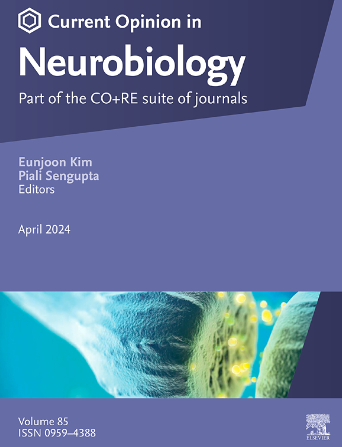Spinal sensory innervation of the intestine
IF 4.8
2区 医学
Q1 NEUROSCIENCES
引用次数: 0
Abstract
Sensing our internal environment, or interoception, is essential under physiologic circumstances, such as controlling food intake, and under pathophysiologic circumstances, often triggering abdominal pain. The sensory neurons that innervate the gastrointestinal (GI) tract to mediate interoception originate in two separate parts of the peripheral nervous system: the spinal sensory neurons, whose cell bodies reside in the dorsal root ganglia (DRG), and the vagal sensory neurons, whose cell bodies reside in the nodose ganglia. While the vagal sensory neurons have been extensively studied for their roles in interoception, the roles of the DRG sensory neurons in internal gut sensing are only beginning to be uncovered. Here, we review the recent advances in understanding the diverse properties and functions of gut-innervating DRG sensory neurons and highlight the many unknowns with regards to this understudied population in regulating interoception.
肠的脊髓感觉神经支配。
感知我们的内部环境,或内感受,在生理情况下是必不可少的,比如控制食物摄入,在病理生理情况下,经常引发腹痛。支配胃肠道介导内感受的感觉神经元起源于外周神经系统的两个不同部分:脊髓感觉神经元,其细胞体位于背根神经节(DRG),迷走感觉神经元,其细胞体位于结节神经节。虽然迷走感觉神经元在内感受中的作用已被广泛研究,但DRG感觉神经元在肠道内感觉中的作用才刚刚开始被发现。在这里,我们回顾了最近在理解肠神经支配DRG感觉神经元的不同特性和功能方面的进展,并强调了关于这一未被充分研究的群体在调节内感受方面的许多未知因素。
本文章由计算机程序翻译,如有差异,请以英文原文为准。
求助全文
约1分钟内获得全文
求助全文
来源期刊

Current Opinion in Neurobiology
医学-神经科学
CiteScore
11.10
自引率
1.80%
发文量
130
审稿时长
4-8 weeks
期刊介绍:
Current Opinion in Neurobiology publishes short annotated reviews by leading experts on recent developments in the field of neurobiology. These experts write short reviews describing recent discoveries in this field (in the past 2-5 years), as well as highlighting select individual papers of particular significance.
The journal is thus an important resource allowing researchers and educators to quickly gain an overview and rich understanding of complex and current issues in the field of Neurobiology. The journal takes a unique and valuable approach in focusing each special issue around a topic of scientific and/or societal interest, and then bringing together leading international experts studying that topic, embracing diverse methodologies and perspectives.
Journal Content: The journal consists of 6 issues per year, covering 8 recurring topics every other year in the following categories:
-Neurobiology of Disease-
Neurobiology of Behavior-
Cellular Neuroscience-
Systems Neuroscience-
Developmental Neuroscience-
Neurobiology of Learning and Plasticity-
Molecular Neuroscience-
Computational Neuroscience
 求助内容:
求助内容: 应助结果提醒方式:
应助结果提醒方式:


